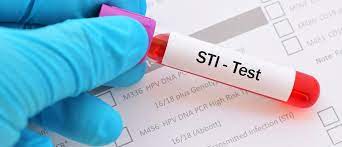Want help to write your Essay or Assignments? Click here
STIs Practicum Journal Entry
This practicum is one of the most fascinating experiences in my clinical practice. Dealing with patients diagnosed with sexually transmitted infections (STIs) is challenging as most of the patient are hesitant to talk openly to a nurse or doctor about their experiences, which makes it challenging during clinical decision making processes (American Congress of Obstetricians and Gynaecologists, 2011).
Mrs. Kate (pseudo name) a 21 year old college student presented to the clinic with complaints of itchiness around her genitalia, sharp burning sensation during sexual intercourse and had noted whitish discharge that had foul smell. From the clinical manifestation, I gathered that the patient is suffering from an infection, which could be either sexually transmitted infections (STIs) or urinary tract infections (UTIs). There is a thin line that separated the two, which indicated the need for further laboratory test.
According to Centre for disease control and prevention (CDC), UTIs and STIs clinical manifestations are non-specific and are a common to problem for females. This highlights the likelihood of misdiagnosis. The common clinical manifestation for the urogenital diseases includes a burning sensation during urination, vaginal discharges and pelvic pain. However, in UTIs infection, vaginal discharge with awful smell is normally absent. The patient with urinary tract infection tends to have fever. A pelvic exam, urine culture and vaginal culture results indicate that the patient had yeast vaginal infection (CDC, 2013).
Want help to write your Essay or Assignments? Click here
One of the challenges experienced during this practicum was during sexual history assessment. Initially, the patient was hesitant to disclose the information because it is a taboo and also she believed that disclosing this information would victimize her. After reinforcing the issue of confidentiality, the patient became relaxed and disclosed the sensitive information.
The sexual history assessment was done using the general guide of the ‘5 Ps.’ This included the number of sex partners, the type of sexual activity, the rates of use of protection, and use of contraceptives. This helped me understand the patient literacy and perspectives about UTI (Schuiling and Likis, 2013).
The patients seemed somewhat distressed when I gave her the diagnosis results. However, she was cooperative all through the care plan. The patient was advised to have regular check up with the gynaecologists. This is because sexually transmitted infections (STIs) have short and long term impacts that can be life threatening. The short term impacts include emotional disturbances due to physical changes.
The long term effects include genital sores, inflammation, infertility issues and pelvic inflammatory reactions. Fortunately, genital yeast infections like other sexually transmitted infections (STIs) is manageable if diagnosed early and proper medication regimen is provided (CDC, 2013).
The patient had tried to manage the itchiness and pain using Tylenol (OTC) and vaginal cream, which yielded little success. The patient was given fluconazole 150 mg and Terconazole 80 mg both orally administered one suppository/day for at least 3 days. The medication ensured that the patient did not get recurrent infection. The patient was encouraged to observe hygiene and practice abstinence during the medication regimen. Other hygiene measures such as mutual monogamy, abstinence and avoid of douching practices.
Want help to write your Essay or Assignments? Click here
This practicum was very enlightening, especially on ways to practice cultural competency. I noticed that sexually transmitted infections (STIs) education focuses in specific information on signs and symptoms which seems to be the worst case scenarios and a taboo to most of the community.
The only down to earth guidance is abstinence and use of condom. If not handled with care, the interaction with the patient could affect patient psychosocial status. I have learnt a lot from this practicum and will use the knowledge to help other patients to identify risk factors and practice preventive measures (Schuiling and Likis, 2013).
References
American Congress of Obstetricians and Gynecologists. (2011). Guideline for adolescent health care (2nd ed.). Retrieved from http://www.acog.org
Centers for Disease Control and Prevention (CDC). (2013). Incidence, prevalence, and cost of sexually transmitted infections in the United States. Retrieved from http://stacks.cdc.gov/view/cdc/13174
Schuiling, K. D., & Likis, F. E. (2013). Women’s gynecologic health (2nd ed.). Burlington, MA: Jones and Bartlett Publishers.
Want help to write your Essay or Assignments? Click here




